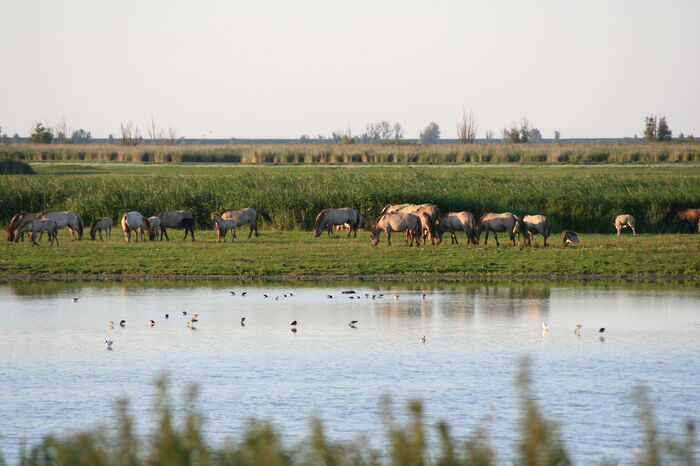The environmental cost of scientific research
Experimental science is often extremely resource-intensive, presenting a serious threat to the planet. Sarah Foster examines the causes of this issue, and suggests potential solutions

Research science will surely play a critical role in reversing and mitigating the immense environmental crises we have inflicted on the earth, and the resulting health epidemics we have inflicted on ourselves. However, the current culture of research has a problem which seems to directly contradict this altruistic mission: science generates immense quantities of waste.
In many labs, washable glass Petri dishes and culture tubes have been replaced with single-use plastic alternatives. Syringes and pipette tips are all used once and then discarded, while culture media is often sterilised through a disposable filter into a disposable pre-sterilised plastic bottle.
Plastic consumables save time and labour: they come pre-sterilised and don’t have to be washed at the end of the experiment. After use, most of them go into landfill or biohazard waste streams. While many lab plastics are recyclable in principle, Mick George, Cambridge University’s current waste contractor, does not allow them to be placed in the recycling bin – a rule which is likely due to valid concerns about contamination.
In a 2015 Nature article, Mauricio Urbina and colleagues from the University of Exeter estimated that Exeter’s Department of Biosciences generated about 267 tonnes of plastic in 2014, which they extrapolated to an estimate of around 5.5 million tonnes of lab-generated plastic waste worldwide. While not an immense proportion of global plastic use (according to statistics from Plastics Europe, 322 million tonnes of plastic were produced worldwide in 2015), this is nonetheless a significant tonnage of waste, equivalent to the weight of about 2,619 London Eyes.
It is worth noting that plastic is produced from petroleum, raising environmental concerns long before its disposal, and thus rendering the entire cycle of plastic usage unsustainable, regardless of possibilities for recycling.
Aside from plastic disposables, another significant contributor to laboratory waste streams is packaging. Laboratory supplies often come bundled in absurd quantities of material, frequently including expanded polystyrene (EPS), which is used to insulate temperature-sensitive materials and is very hard to recycle.
Much like disposable plastics and packaging overuse in our daily lives, most of this waste is entirely avoidable. Buoyed by the dramatic and heart-wrenching footage of BBC’s Blue Planet 2, popular and political support is building for reducing domestic plastic usage and scientists have an ethical obligation to extend this drive to their research as much as is safe and possible. Much plastic waste in labs could be avoided through simple behavioural shifts on the part of researchers: re-using glass Petri dishes and culture tubes instead of taking a new plastic one each time, for example.
Research institutes need to establish custodial and procurement policies which make it easy for labs to avoid waste. These could include centralised dish-washing and sterilisation services to clean reusable glass items, alongside procurement policies which make it easier to find alternatives to plastic disposables.
Cambridge University has a legally-mandated Duty of Care “to ensure that any waste that is removed from University premises is stored, transported and disposed of without harming the environment”. Unfortunately, there is no way to dispose of tonnes of plastic waste every year without violating this, and damaging the planet. The University sends most of its non-toxic non-recyclable waste to a Waste-to-Energy plant, and, while not as damaging as landfill, these have their problems as well: Waste Incineration and Waste-to-Energy plants can release a host of profoundly nasty byproducts of plastic incineration, both into our atmosphere and our water. Although filtration technologies are improving, even best practices can only limit, rather than eliminate, the release of these byproducts.
A cynic might wonder if some academic science is not worth the environmental cost of the waste it produces and, in some cases, this is likely true. Unfortunately, the culture of wastefulness in science is directly tied to a long-bemoaned problem in academia: that publication numbers and impact factors often seem to matter more than scientific quality or originality of ideas. Graduate students and postdocs, many of whom are already stretched very thin, are understandably wary of anything that might slow the breakneck pace of their research, resulting in an unwillingness to explore more environmentally friendly alternatives to current established methods.
Science will always be resource intensive, but scientists can produce excellent, elegant work without the careless attitude that academic research currently takes towards the environment. Surely the scientific community should endeavour to produce science in a way that does not contribute to the very problems it strives to solve
 News / Pembroke to convert listed office building into accom9 December 2025
News / Pembroke to convert listed office building into accom9 December 2025 News / Gov declares £31m bus investment for Cambridge8 December 2025
News / Gov declares £31m bus investment for Cambridge8 December 2025 Features / Searching for community in queer Cambridge10 December 2025
Features / Searching for community in queer Cambridge10 December 2025 News / Uni redundancy consultation ‘falls short of legal duties’, unions say6 December 2025
News / Uni redundancy consultation ‘falls short of legal duties’, unions say6 December 2025 Lifestyle / Into the groove, out of the club9 December 2025
Lifestyle / Into the groove, out of the club9 December 2025









